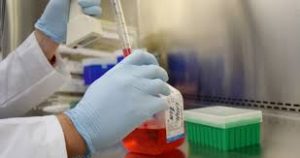I will, from now on, blame my early on-set dementia not on booze, or pucks to the head, many, many concussions. or gaslighting, but on the bacteria in my mouth.
 Technology Networks reports the healthy human oral microbiome consists of not just clean teeth and firm gums, but also energy-efficient bacteria living in an environment rich in blood vessels that enables the organisms’ constant communication with immune-system cells and proteins.
Technology Networks reports the healthy human oral microbiome consists of not just clean teeth and firm gums, but also energy-efficient bacteria living in an environment rich in blood vessels that enables the organisms’ constant communication with immune-system cells and proteins.
A growing body of evidence has shown that this system that seems so separate from the rest of our bodies is actually highly influential on, and influenced by, our overall health, said Purnima Kumar, professor of periodontology at The Ohio State University, speaking at a science conference earlier in Feb.
For example, type 2 diabetes has long been known to increase the risk for gum disease. Recent studies showing how diabetes affects the bacteria in the mouth help explain how periodontitis treatment that changes oral bacteria also reduces the severity of the diabetes itself.
Connections have also been found between oral microbes and rheumatoid arthritis, cognitive abilities, pregnancy outcomes and heart disease, supporting the notion that an unhealthy mouth can go hand-in-hand with an unhealthy body.
“What happens in your body impacts your mouth, and that in turn impacts your body. It’s truly a cycle of life,” Kumar said.
When the American Association for the Advancement of Science (AAAS) themed this year’s annual meeting around dynamic ecosystems, Kumar saw an opportunity to put the mouth on the map, so to speak, as a vibrant microbial community that can tell us a lot about ourselves.
“What is more dynamic than the gateway to your body – the mouth? It’s so ignored when you think about it, and it’s the most forward-facing part of your body that interfaces with the environment, and it’s connected to this entire tubing system,” she said. “And yet we study everything but the mouth.”
Kumar organized a session at the AAAS meeting today (Feb. 8, 2021) that she titled “Killer Smile: The Link Between the Oral Microbiome and Systemic Diseases.”
The oral microbiome refers to the collection of bacteria – some helpful to humans and some not – that live inside our mouths.
Though there remains a lot to learn, the basics of these relationship between the oral microbiome and systemic disease have become clear.
Oral bacteria use oxygen to breathe and break down simple molecules of carbohydrates and proteins to stay alive. Something as simple as not brushing your teeth for a few days can set off a cascade of changes, choking off the oxygen supply and causing microbes to shift to a fermentative state.
“That creates a septic tank, which produces byproducts and toxins that stimulate the immune system,” Kumar said. An acute inflammatory response follows, producing signaling proteins that bacteria see as food.
“Then this community – it’s an ecosystem – shifts. Organisms that can break down protein start growing more, and organisms that can breathe in an oxygen-starved environment grow. The bacterial profile and, more importantly, the function of the immune system changes,” she said.
The inflammation opens pores between cells that line the mouth and blood vessels get leaky, allowing what have become unhealthy bacteria to enter circulation throughout the body.

